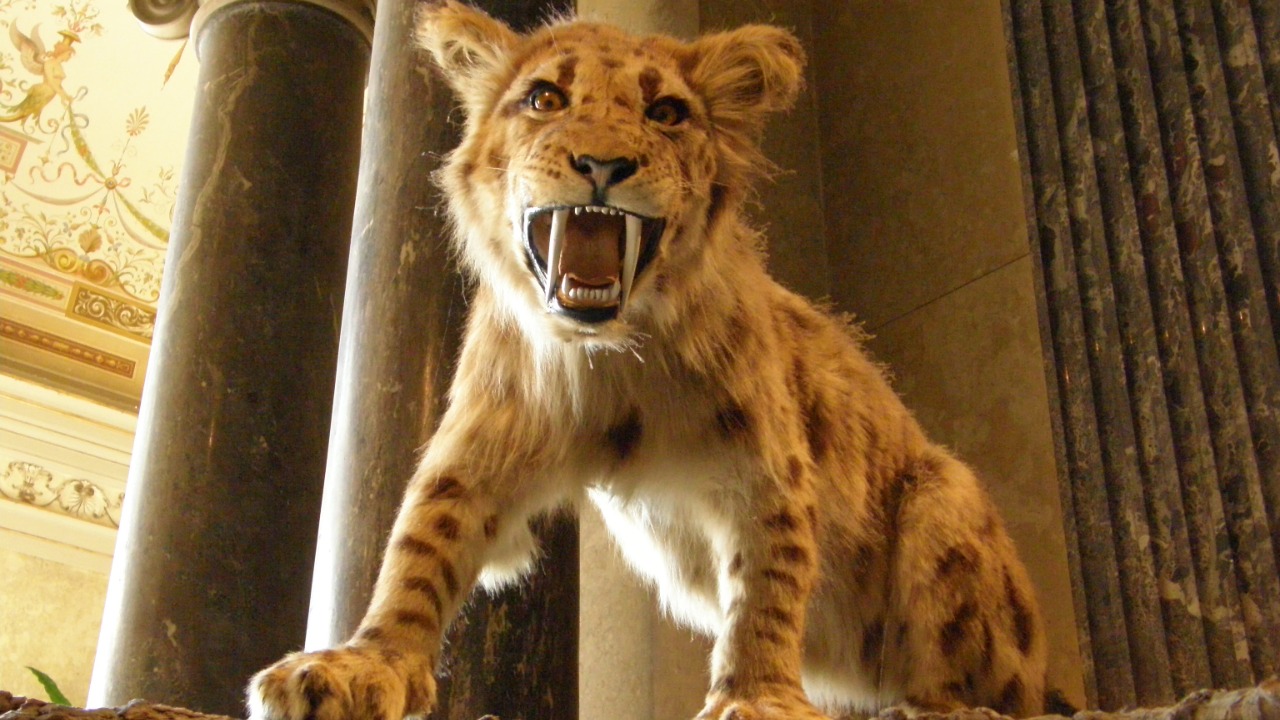
In a remarkable archaeological breakthrough, scientists have uncovered a mummified saber-toothed cat cub in the Siberian permafrost. This prehistoric specimen, estimated to be around 35,000 years old, offers an unprecedented glimpse into the Ice Age, with its remains almost perfectly preserved. The discovery, made in the frozen tundra of Yakutia, Siberia, has left experts astounded by the condition of the cub, which boasts striking features that have been impeccably maintained over millennia.
Discovery Location and Circumstances
The saber-toothed kitten was unearthed in the vast, frozen expanses of Siberia’s tundra, a region known for its harsh climate and rich archaeological potential. Specifically, the remains were found in Yakutia, a part of Siberia that has yielded numerous prehistoric treasures due to its permafrost conditions. The frozen ground acts as a natural preservative, maintaining organic material in a state that defies the passage of time. This environment was crucial in preserving the saber-toothed kitten, allowing scientists to study its features in extraordinary detail. The discovery site in the Russian tundra provides a unique window into the past, offering insights into the ecosystem and climate of the Ice Age era.
Finding such a well-preserved specimen in the Russian tundra is a rare occurrence, highlighting the significance of the permafrost in preserving ancient life forms. The location of Yakutia is particularly noteworthy, as it has been a hotspot for similar discoveries, including woolly mammoths and other prehistoric creatures. This region’s ability to preserve biological material so effectively makes it an invaluable resource for scientists seeking to understand the Earth’s distant past.
Age and Preservation State
The saber-toothed kitten is estimated to be around 35,000 years old, a testament to the incredible preservation capabilities of the Siberian permafrost. The remains are described as almost perfectly preserved, with some reports suggesting the kitten could be as old as 37,000 years. This level of preservation is rare and provides a unique opportunity for researchers to study the anatomy and physiology of these extinct creatures in detail. The condition of the kitten allows scientists to examine its fur, skin, and even internal organs, offering insights into its diet, health, and the environment it lived in.
The preservation state of the kitten is so exceptional that it has been compared to other notable finds in the region, such as the well-preserved mammoths. This discovery not only adds to the growing body of evidence about the life and times of saber-toothed cats but also underscores the importance of Siberia as a repository of ancient life. The ability to study such a well-preserved specimen opens new avenues for understanding the evolutionary history of these iconic predators.
Physical Condition and Features
The physical condition of the saber-toothed kitten is nothing short of extraordinary. The remains are described as well-preserved, with striking features that have captivated scientists and the public alike. The kitten’s fur, skin, and even its distinctive saber teeth are intact, providing a vivid picture of what these creatures looked like during their time. This level of detail is rare in paleontological finds and offers a unique opportunity to study the morphology of saber-toothed cats.
The striking features of the kitten, such as its well-preserved fur and teeth, allow researchers to make inferences about its lifestyle and behavior. The preservation of such features also aids in understanding the evolutionary adaptations that allowed these predators to thrive in the harsh climates of the Ice Age. The discovery of this kitten adds a new dimension to our understanding of saber-toothed cats, providing tangible evidence of their physical characteristics and ecological roles.
Scientific Impact and Reactions
The discovery of the mummified saber-toothed cat cub has sent ripples through the scientific community, with experts expressing astonishment at the find. The preservation of the kitten in Siberian permafrost offers a rare opportunity to study a species that has long been extinct, providing insights into its biology and ecology. Scientists are particularly excited about the potential to extract DNA from the remains, which could offer clues about the genetic makeup of saber-toothed cats and their evolutionary history.
Reactions from the scientific community highlight the significance of this discovery in the broader context of paleontology and evolutionary biology. The well-preserved state of the kitten allows for detailed studies that could shed light on the evolutionary pathways of large predators during the Ice Age. This find not only enriches our understanding of saber-toothed cats but also underscores the importance of preserving and studying permafrost regions as they continue to yield invaluable insights into our planet’s prehistoric past.
More from MorningOverview